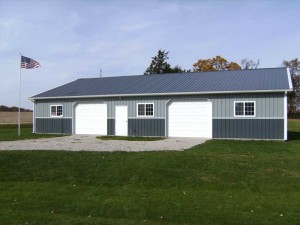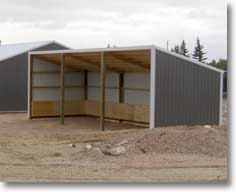Roof Slope
Dang, up jumped an altogether conspicuous term included as a part of every building, and I totally neglected – roof slope.
Growing up in low-middle income level suburbia, I had never given much thought to slope of roofs. This oversight existed even though my father and his five brothers (as well as their Dad – my grandpa Pete) were building contractors. There wasn’t a huge variety to pitch of roofs where we lived, no architecturally designed steep slope roofs.
Once I entered the prefabricated wood truss industry, my perspectives had to change and change fast. Building designers and architects were starting to embrace possibilities afforded to their designs by trusses.
Roof pitch or slope is angle of roof surface above a “flat” or horizontal plane.
 Most often roof slope expressions are as “rise” or “pitch”, measured in inches of vertical rise per foot of horizontal distance or “run”. So a four-inch rise roof, also described as a 4 in 12 roof, means for every 12 inches (or foot) of horizontal distance, height of roof increases by four inches.
Most often roof slope expressions are as “rise” or “pitch”, measured in inches of vertical rise per foot of horizontal distance or “run”. So a four-inch rise roof, also described as a 4 in 12 roof, means for every 12 inches (or foot) of horizontal distance, height of roof increases by four inches.
While roof slopes are typically expressed in “rise”, they can also be expressed in degrees (on occasion) or in percent of slope (rarely). A 4-in-12 roof rises four inches for every 12 inches of run. Same as a 18.4 degree slope, or a 33-1/3 % slope. Four inches of rise per 12 inches of run equals one inch of rise per three inches of run or 1/3 = 33-1/3%.
Definition of Rise: vertical change in height per unit of horizontal movement or run.
Definition of Run: horizontal change in distance, typically in construction we use 12 inches or one foot and express roof slopes as units of rise per single unit of run, such as four inches of rise per 12 inches of run or four inches per foot.
Definition of Slope: angle of change in elevation, expressed in one of several forms
Slope as rise / run, e.g. 4 in 12 or 4/12
Slope as an angle: e.g. 18.4 degrees
Slope expressed as a percent or “grade”: Slope calculated as rise / run or 4 / 12 = .333 x 100 to convert to a percent or 33-1/3% grade
Our AutoCAD drafters happen to prefer pitches given as an angle, rather than slope. It speeds up their ability to create, by not having to calculate angles.
Prefabricated roof truss drawings specify slope as rise / run, although cutting lists sent to manufacturing plant for component cutting are in degrees.









Do you contract to build a residential barndominium? Where are your offices? I currently live in South Carolina near Charlotte, NC and would need to purchase property to build near York or Lancaster County SC
WE are not building contractors in any state, we furnish fully engineered custom designed building kits for DIYers, or for our clients to hire builders to assemble (most of our clients do build themselves). WE have provided over 100 buildings to our clients in the Carolinas. Our headquarters are in Roberts County, South Dakota and we have a Design Studio in West Fargo, North Dakota.